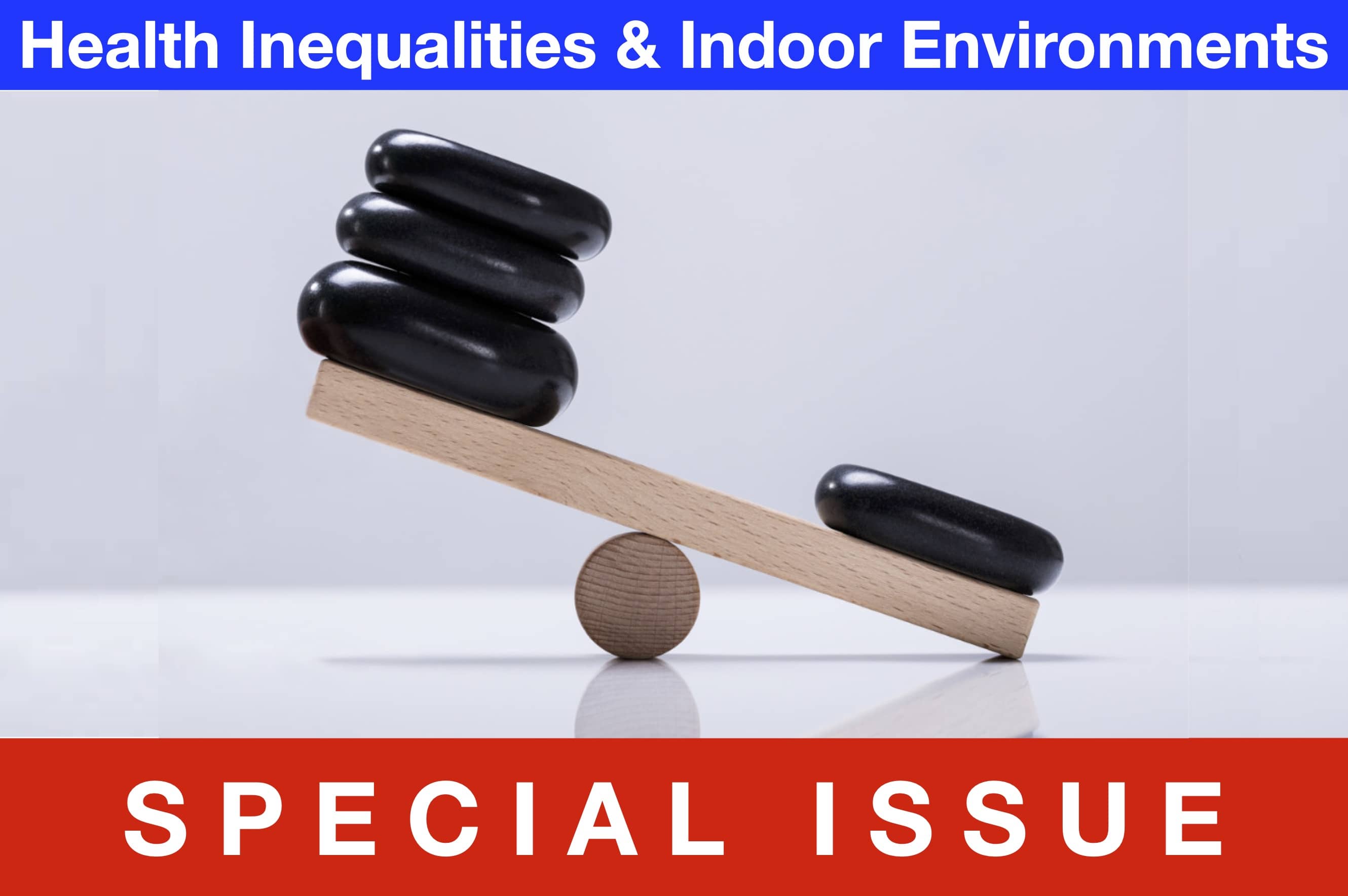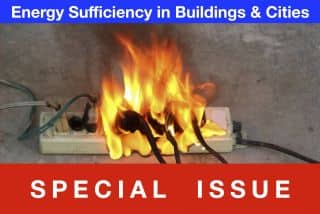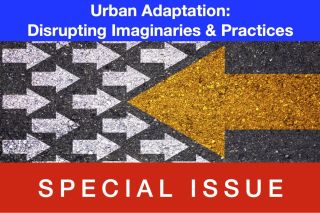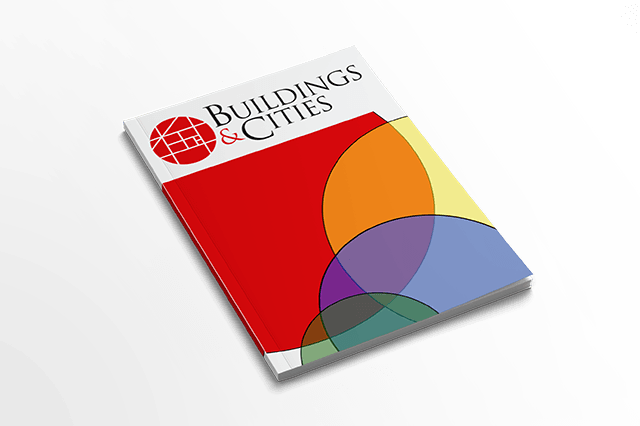
www.buildingsandcities.org/journal-content/special-issues/health-inequalities-indoor-environments.html
Health Inequalities and Indoor Environments

How do indoor environments affect health inequalities, inequities and injustice?
Health inequalities are a crucial aspect of public health and a pressing societal challenge. Access to healthy indoor spaces that are optimised to promote health should be seen as a fundamental right for all. This special issue is a starting point for the built-environment and public health communities to identify many existing inequities in order to improve methodological approaches, share vocabularies between disciplines, and create new knowledge necessary to create a safe and healthy indoor environments for all. Equitable design could translate into prioritising air quality improvements in the homes of people suffering from respiratory conditions, introducing inclusive design elements for disabled people, or providing energy retrofit subsidies to low-income, fuel-poor households.
Guest editors: Anna Mavrogianni & Marcella Ucci
There is compelling evidence that aspects of indoor environments, e.g. thermal, visual, acoustic conditions and air quality, can adversely affect health, but the role of indoor environments in health inequalities is less understood.
One fundamental question for public health and built-environment research is understanding how and to what extent indoor environments act as effect modifiers of structural inequalities or of other intermediary factors (e.g. outdoor conditions). This would then help address the other fundamental question: which pathways or levers pertaining indoor environments may be most effective at removing inequalities and delivering health equity?
The terms 'health inequality', 'health equity' and 'social determinants of health' deserve explanation. Health inequality refers to mapping and understanding health disparities and their root causes. This can refer to differences in health status (e.g. life expectancy) but also in access to or quality of healthcare services, as well as differences in risky health behaviours (e.g. smoking) and, more broadly, differences in the wider 'social determinants of health'. The latter are deeply intertwined with the notion of health inequalities, framing health as a social phenomenon and emphasising how an individual's (or a group's) position in society plays a central role in health inequities. The most important structural stratifiers and their proxy indicators include: income, education, occupation, social class, gender and race/ethnicity (WHO Commission on the Social Determinants of Health). Several 'intermediary determinants' shape health outcomes-these include 'material circumstances', such as indoor (and outdoor) environmental conditions where people live and work. The term 'equity' refers to the principles that should guide the identification of potential 'fair' solutions.
The papers published in this special issue illustrate what can be achieved by integrating different methods (e.g. building stock modelling and focus groups) and data sources (e.g. Energy Performance Certificates and mental health data). Beyond their specific findings, the papers are a significant and novel contribution to the literature by providing a blueprint for the successful synthesis of methods and materials originally produced by different disciplines and sectors, and discussing the challenges and opportunities of their respective study designs and approaches.
Table of contents
Health inequalities and indoor environments: research challenges and priorities [editorial]
M. Ucci & A.
Mavrogianni
Assessing retrofit policies for fuel-poor homes in London
M. C. Georgiadou, D.
Greenwood, R. Schiano-Phan & F. Russo
IAQ and environmental health literacy: lived experiences of vulnerable people
C. Smith, A.
Drinkwater, M. Modlich, D. van der Horst & R. Doherty
Linking housing, sociodemographic, environmental and mental health data at scale
P. Symonds, C. H.
Simpson, G. Petrou, L. Ferguson, A. Mavrogianni & M. Davies
Measuring health inequities due to housing characteristics
K. Govertsen &
M. Kane
A population-level framework to estimate unequal indoor heat and air-pollution exposure
R. Cole, C. Simpson,
L. Ferguson, P. Symonds, J. Taylor, C. Heaviside, P. Murage, H. Macintyre, S.
Hajat, A. Mavrogianni & M. Davies
Latest Peer-Reviewed Journal Content
A framework for 1.5°C-aligned GHG budgets in architecture
G Betti, I Spaar, D Bachmann, A Jerosch-Herold, E Kühner, R Yang, K Avhad & S Sinning
Net zero retrofit of the building stock [editorial]
D Godoy-Shimizu & P Steadman
Co-learning in living labs: nurturing civic agency and resilience
A Belfield
The importance of multi-roles and code-switching in living labs
H Noller & A Tarik
Researchers’ shifting roles in living labs for knowledge co-production
C-C Dobre & G Faldi
Increasing civic resilience in urban living labs: city authorities’ roles
E Alatalo, M Laine & M Kyrönviita
Co-curation as civic practice in community engagement
Z Li, M Sunikka-Blank, R Purohit & F Samuel
Preserving buildings: emission reductions from circular economy strategies in Austria
N Alaux, V Kulmer, J Vogel & A Passer
Urban living labs: relationality between institutions and local circularity
P Palo, M Adelfio, J Lundin & E Brandão
Living labs: epistemic modelling, temporariness and land value
J Clossick, T Khonsari & U Steven
Co-creating interventions to prevent mosquito-borne disease transmission in hospitals
O Sloan Wood, E Lupenza, D M Agnello, J B Knudsen, M Msellem, K L Schiøler & F Saleh
Circularity at the neighbourhood scale: co-creative living lab lessons
J Honsa, A Versele, T Van de Kerckhove & C Piccardo
Positive energy districts and energy communities: how living labs create value
E Malakhatka, O Shafqat, A Sandoff & L Thuvander
Built environment governance and professionalism: the end of laissez-faire (again)
S Foxell
Co-creating justice in housing energy transitions through energy living labs
D Ricci, C Leiwakabessy, S van Wieringen, P de Koning & T Konstantinou
HVAC characterisation of existing Canadian buildings for decarbonisation retrofit identification
J Adebisi & J J McArthur
Simulation and the building performance gap [editorial]
M Donn
Developing criteria for effective building-sector commitments in nationally determined contributions
P Graham, K McFarlane & M Taheri
Reimagining circularity: actions for optimising the use of existing buildings
R Lundgren, R Kyrö, S Toivonen & L Tähtinen
Effective interdisciplinary stakeholder engagement in net zero building design
S Vakeva-Baird, F Tahmasebi, JJ Williams & D Mumovic
Metrics for building component disassembly potential: a practical framework
H Järvelä, A Lehto, T Pirilä & M Kuittinen
The unfitness of dwellings: why spatial and conceptual boundaries matter
E Nisonen, D Milián Bernal & S Pelsmakers
Environmental variables and air quality: implications for planning and public health
H Itzhak-Ben-Shalom, T Saroglou, V Multanen, A Vanunu, A Karnieli, D Katoshevski, N Davidovitch & I A Meir
Exploring diverse drivers behind hybrid heating solutions
S Kilpeläinen, S Pelsmakers, R Castaño-Rosa & M-S Miettinen
Urban rooms and the expanded ecology of urban living labs
E Akbil & C Butterworth
Living with extreme heat: perceptions and experiences
L King & C Demski
A systemic decision-making model for energy retrofits
C Schünemann, M Dshemuchadse & S Scherbaum
Modelling site-specific outdoor temperature for buildings in urban environments
K Cebrat, J Narożny, M Baborska-Narożny & M Smektała
Understanding shading through home-use experience, measurement and modelling
M Baborska-Narożny, K Bandurski, & M Grudzińska
Building performance simulation for sensemaking in architectural pedagogy
M Bohm
Beyond the building: governance challenges in social housing retrofit
H Charles
Heat stress in social housing districts: tree cover–built form interaction
C Lopez-Ordoñez, E Garcia-Nevado, H Coch & M Morganti
An observational analysis of shade-related pedestrian activity
M Levenson, D Pearlmutter & O Aleksandrowicz
Learning to sail a building: a people-first approach to retrofit
B Bordass, R Pender, K Steele & A Graham
Market transformations: gas conversion as a blueprint for net zero retrofit
A Gillich
Resistance against zero-emission neighbourhood infrastructuring: key lessons from Norway
T Berker & R Woods
Megatrends and weak signals shaping future real estate
S Toivonen
A strategic niche management framework to scale deep energy retrofits
T H King & M Jemtrud
Generative AI: reconfiguring supervision and doctoral research
P Boyd & D Harding
Exploring interactions between shading and view using visual difference prediction
S Wasilewski & M Andersen
How urban green infrastructure contributes to carbon neutrality [briefing note]
R Hautamäki, L Kulmala, M Ariluoma & L Järvi
Implementing and operating net zero buildings in South Africa
R Terblanche, C May & J Steward
Quantifying inter-dwelling air exchanges during fan pressurisation tests
D Glew, F Thomas, D Miles-Shenton & J Parker
Western Asian and Northern African residential building stocks: archetype analysis
S Akin, A Eghbali, C Nwagwu & E Hertwich
Join Our Community

The most important part of any journal is our people – readers, authors, reviewers, editorial board members and editors. You are cordially invited to join our community by joining our mailing list. We send out occasional emails about the journal – calls for papers, special issues, events and more.
We will not share your email with third parties. Read more



Latest Commentaries
COP30 Report
Matti Kuittinen (Aalto University) reflects on his experience of attending the 2025 UN Conference of the Parties in Belém, Brazil. The roadmaps and commitments failed to deliver the objectives of the 2025 Paris Agreement. However, 2 countries - Japan and Senegal - announced they are creating roadmaps to decarbonise their buildings. An international group of government ministers put housing on the agenda - specifying the need for reduced carbon and energy use along with affordability, quality and climate resilience.
Building-Related Research: New Context, New Challenges
Raymond J. Cole (University of British Columbia) reflects on the key challenges raised in the 34 commissioned essays for Buildings & Cities 5th anniversary. Not only are key research issues identified, but the consequences of changing contexts for conducting research and tailoring its influence on society are highlighted as key areas of action.